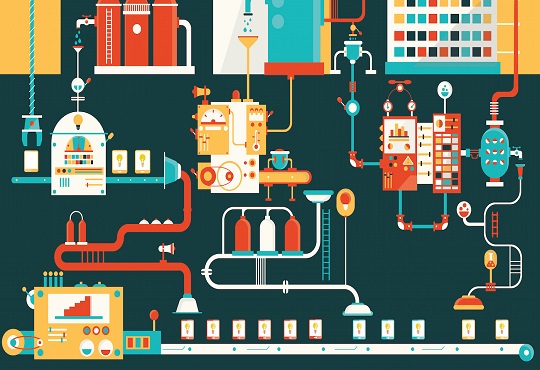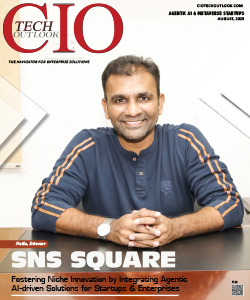How is Digitalization Transforming Manufacturing
Janifha Evangeline | Saturday, 02 October 2021, 01:06 IST

Accenture has facilitated the country’s largest bakery foods organization - Britannia Industries to not only accelerate innovation but also capture value & improve the customer and supplier experience via a digital transformation program.
While Accenture designed, developed as well as deployed a technology system based on SAP S/4HANA, as part of the partnership with Britannia, the new system has led to increasing the visibility as well as the accessibility of data across the organization, which has enabled deeper use of automation and analytics in order to guide business decisions.
Whether it is known as “Industry 4.0” or “IIoT” or “smart manufacturing,” the application of Information and Communication Technology to every dimension/facet of manufacturing is reshaping modern manufacturing and this digitalization of manufacturing is transforming how products are designed, fabricated, used, operated and serviced post-sale, similar to how it is changing the operations, processes as well as energy footprint of factories.
Smart Manufacturing or IIoT is driven by the advent of numerous technologies such as:
- IoT
- Machine Learning
- Industrial robotics
- advanced sensor technologies
- cloud computing
- Data analytics
- 3D Printing
- high-performance computing (HPC) - powered computer-aided design (CAD) and engineering (CAE) software &
- Wireless connectivity, which facilitates machine-to-machine (M2M) communications, in a better way
Amongst these most significant is the marriage of sensors with software into the Internet of Things. In a factory environment, the Internet of Things refers to the use/implementation of sensors in manufacturing/production equipment that include robots, actuators, 3D Printers, stampers, CNC machines, etc and the products they manufacture such as jet engines, radiological equipment, etc. in order to facilitate a real-time flow of information regarding the operational status as well as the condition of the equipment/product.
With IoT, devices are enriched with “embedded computing” which allows the devices to interact as well as communicate with each other. Thus, most of the “Things” in IoT are sensors that are being embedded within devices, machines, and products. These sensors measure everything right from consumption, load, position, wear, output, and capacity to salient operating conditions, which include humidity, temperature, & electrical flow.
Making better operational and production decisions
While the Internet of Things will buttress manufacturing execution systems, warehouse management systems, warehouse control systems, and transportation management systems which are deployed in shop floors as well as warehouses, integrating this information from numerous machines on the plant floor – and later with information from other factories across the manufacturing chain, comprising those of suppliers has the ability to not only equip manufacturing enterprises with real-time intelligence about their production processes but also bestow those manufacturing enterprises with the information required to make better operational and production decisions. Therefore, these sensors play a key role in creating/building the information streams upon which smart manufacturing techniques rely.
By 2025, the application of the Internet of Things is predicted to reach/generate a value of USD 1.2 to USD 3.7 trillion, globally, in 4 primary forms. These include operational efficiency, predictive and preventive maintenance, supply chain management & inventories, and logistics.
Maximize factory floor efficiency
Of the 4 aforementioned IoT application forms, analysts expect the application of the Internet of Things to maximize/optimize factory floor efficiency will have the greatest impact, and it would increase productivity by as much as twenty-five percent. Also, one of the core benefits of digital manufacturing other than increased productivity on the factory floor is that it augments an enterprise’s ability to process intelligence faster.
Digitizing the manufacturing units of Britannia
Accenture has facilitated Britannia Industries to accelerate innovation, capture value & improve the customer and supplier experience via a digital transformation program.
“Technology is a critical enabler for business leaders looking to spot and respond to evolving consumer and market demands,” said Manish Gupta, managing director and lead for Accenture’s Products practice in India. “By transforming Britannia’s core operations, we have helped build a digital backbone that will not only benefit their entire value chain of suppliers, retailers, and partners but also creates a solid foundation for innovation and new growth opportunities in today’s integrated marketplace.”
By digitizing 80 plus manufacturing units as well as fifty warehouses, Britannia can decrease operational costs to a greater extent and unlock capital for innovation as well as growth initiatives. Therefore, the system will not only improve inventory optimization, and product availability but will also improve workforce productivity for Britannia by building/developing more effective business processes across manufacturing, finance, sales, and supply chain management.
“Despite the challenging business environment in the past year, we have witnessed a steady growth in our business performance. At Britannia, we are committed to expanding to new product categories in line with consumer expectations and our vision of entering one new market every year,” said N Venkataraman, executive director & chief financial officer, Britannia. “We believe the digital transformation of our business, supported by Accenture, will play a pivotal role in growing our business at speed and scale with data-backed insights and operational efficiencies,” he said.
Conclusion
Digitalization in manufacturing has brought a paradigm transformation in the manufacturing industry. Most of the companies have started to leverage emerging technologies in order to gain benefits and are also taking initiatives on the workforce development front. Furthermore, it is highly imperative that more organizations adopt world-class technologies along with quality practices to stay ahead in the international market and build a sustainable growth platform for the future.




.jpg)